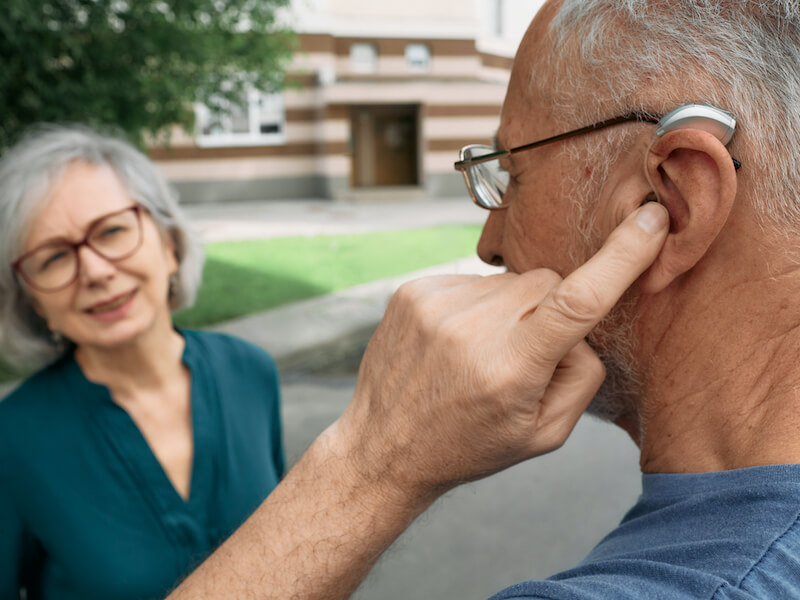
Have you ever had your internet cut right as you’re almost to the best part of your favorite Netflix show? Instead of finding out who won the baking show, you have to watch an endless spinning circle. And so you just wait. Perhaps it’s your modem, might be your router, possibly it’s the internet provider, or possibly it’ll just fix itself. It sort of stinks.
Technology can be tremendously frustrating when it doesn’t work properly. Your hearing aids definitely fall into this category. Most of the time, your hearing aids will give you the means to stay connected to loved ones, have discussions with co-workers, and keep up with your neighbors.
But when they quit working, your hearing loss symptoms can abruptly become much more frustrating. You’ve been let down by the technology you count on. Why would your hearing aids just stop working? So how do you cope with that? Here are the three prevalent ways your hearing aids can malfunction and how to troubleshoot and identify them.
Hearing aids can often have three common issues
Hearing aids are sophisticated devices. Even still, there are some common problems that individuals with hearing aids may experience. Let’s have a look at possible causes of these problems and potential fixes.
Whistling and feedback
Perhaps you suddenly start to hear an awful high-pitched whistling while you’re trying to have a chat with a friend or family member. Or perhaps you notice a little bit of feedback. And so you think, “Why am I hearing whistling in my hearing aids? This is odd”.
Feedback and whistling can be caused by these possible issues:
- Your hearing aids might not be sitting in your ears properly. Try taking them out and putting them back in. If the fit isn’t correct you may need to come see us so we can help you get a better fit.
- The tubing that attaches the hearing aid with the earmold, on behind-the-ear models, can occasionally become compromised. Have a close look to identify whether the tube might have separated or may be damaged in some way.
- Earwax buildup in your ear canal can undermine how your hearing aid works. You’ll find this comes up pretty regularly. That includes making your hearing aid whistle or feedback. You can attempt to clear some of the earwax out (never use a cotton swab) and if that fails, you can get some help from us.
If these issues aren’t easily resolvable, it’s worth speaking with us about correcting the fit or sending your device in for servicing (depending on what we determine the underlying cause of that whistling or feedback might be).
Hearing aids not generating sound
Your hearing aids should make, well, sound. That’s what they’re made to do! Something has definitely gone wrong if you can’t hear any sound coming out of your hearing aid. So what could cause hearing aids to lose all sound? Well, there are a few things:
- Batteries: If you have rechargeable batteries, make certain that they’re completely charged. And even rechargeable batteries should be swapped out from time to time.
- Earwax buildup: Yup, earwax strikes again. Inspect your device for indications of earwax on the microphone or speakers or any sensitive parts. You want to be sure the device is good and clean.
- Your settings: Scroll through the custom settings if your device includes them. Your hearing aids might think you’re in a huge room when you’re actually in a small room because the setting is wrong. The sound you’re hearing may be off as a consequence.
- Power: Everyone forgets to turn their hearing aids on once in a while. Check for this first. Then you can cross that of the list of possible issues.
If these steps don’t correct your issues, we might have the answers. Whether repair, maintenance, or replacement is your next step, we will be capable of helping you figure that out.
Painful ears while you’re wearing your hearing aids
Perhaps your hearing aids are fine functionally but they hurt when they’re in your ears. And you’re probably thinking: why do my ears ache when I use my hearing aids? You’re not as likely to wear your hearing aids every day if they hurt your ears. So, what could be causing it?
- Time: Usually, it just takes some time to get used to your hearing aids. Each individual will have a different adjustment period. When you first get your new hearing aids, we can help you get a reasonable concept of the adjustment period you can expect. If uncomfortable ears remain, talk to us about that as well!
- Fit: The fit of the device is the most obvious issue. After all, the majority of hearing aids work best when they fit tightly. So when your hearing aids aren’t fitting very well, there can be some pain. Some hearing aid models can be fit to the particular shape of your ears. The better the fit, the fewer problems you’ll have with discomfort over the long haul. We will be able to help you get the best possible fit from your devices.
Bypass issues with a little test drive
Before you decide on a set of hearing aids, it’s a good idea to try them out for a while. Most of the time we will have loaner pairs for you to try out before you make a decision.
As a matter of fact, we can help you determine the best type of hearing aid for your requirements, adjust the fit to match your ears, and help you handle any extended issues you might have with your devices. We will be your resource for any assistance you need.
And that’s probably more reliable than your internet company.
